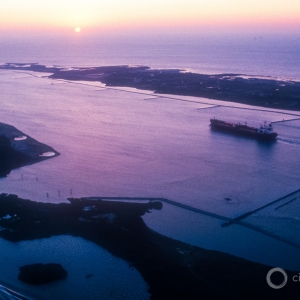Welcome to “What’s Up With Water” – your need-to-know news of the world’s water from Circle of Blue. I’m Eileen Wray-McCann.
A new report says that the world’s dams are filling up – but not in a good way. Rivers are depositing sediment into the reservoirs behind dams, reducing their capacity to hold water. Researchers affiliated with the United Nations calculated how much storage might be lost in the next three decades at the world’s 50,000 large dams. The report estimates that a quarter of the original water storage capacity will be lost by 2050 because of sediment buildup. This will hurt irrigation, power generation, and flood protection. The largest loss of storage capacity will occur in the United Kingdom, Panama, Ireland, and Japan, with the U.S, not far behind.
In Arizona, newly elected leaders wasted no time in tackling the state’s urgent water problems. Katie Hobbs was sworn in as governor on January 2 and began her term by calling water issues “the challenge of our time.” After a week in office, Hobbs established an expert council to recommend updates to the state’s groundwater laws. She also unveiled a previously unreleased report from the Arizona Department of Water Resources. Hobbs’s predecessor had withheld the report from the public. It shows that a high-growth area west of Phoenix does not have enough groundwater to sustain a planned mega-development of 100,000 homes. According to the Arizona Republic, homebuilders must now find other water supplies to finish the development. Hobbs said the area’s inadequate groundwater should be a wake-up call. She said “This report unequivocally shows that we have to act now, or this will only be the first new area that faces this kind of shortage.” Meanwhile, Arizona’s new attorney general hopes to undo a farming deal with a Saudi Arabian company that’s adding to local groundwater declines. Kris Mayes campaigned on a promise to repeal a land lease that the state made with Fondomonte. The firm got below-market rates, leasing 10,000 acres in western Arizona to grow alfalfa for export to Saudi Arabia as cattle feed. Residents in the area have seen their wells run dry as the farm pumps groundwater to irrigate the alfalfa.
In New Mexico, some communities could get millions to rebuild their water systems after the largest wildfire in state history tore through their watershed last year. The funds are a lifeline for areas ravaged by a drying climate. They also underscore the financial and ecological vulnerability of small, impoverished communities in the face of extreme weather. In the this year’s budget, Congress allocated nearly one and a half billion dollars for post-fire recovery in New Mexico. That’s in addition to the two and a half billion dollars that lawmakers had already directed to the state, bringing the total amount of federal aid after the Hermit’s Peak/Calf Canyon fire to nearly $4 billion. The year-end appropriations package included a line item of particular significance: $140 million for water treatment systems for communities in the area scarred by the fire. That includes the small town of Las Vegas, just 12 miles from where the fire started. Las Vegas has about 13,000 people. What is does not have is high-quality water. The town’s main water source, the Gallinas River, is surrounded by scars from the Hermit’s Peak/Calf Canyon fire. The fire ignited in April, after a prescribed burn by the U.S. Forest Service grew out of control. The fire was the largest on record in New Mexico, burning well over 300 thousand acres of public and private land. The Gallinas River used to be a clear stream, but is now is laden with sediment and suspended solids due to ash and soil erosion. That’s a serious problem for the water treatment operators in Las Vegas, according to the town utility director, Maria Gilvarry. The fire did not destroy the treatment system, but the effects of the fire have overwhelmed it. It’s not uncommon for the river water it’s processing to measure a hundred times murkier than before the fire. The current treatment system struggles under those conditions. Until a new treatment system is in place, the utility department is making do with temporary equipment to remove sediment. It is also re-calibrating the chemicals to purify drinking water so that the treatment process is more effective. Gilvarry said federal aid is an undeniable blessing for a predominantly Latino city where median household income is just over $34,000 — about half the national figure. The poverty rate in Las Vegas, New Mexico is above 30 percent. Gilvarry said that Federal aid is the only way the town’s water treatment project could advance so swiftly. As she put it: “Not on our own dime. This is a low-income community.”
And that’s What’s Up With Water from Circle of Blue, where water speaks. You’ll find more news and analysis – and a chance to support our work – at
circleofblue.org. This is Eileen Wray-McCann – thanks for being here.





